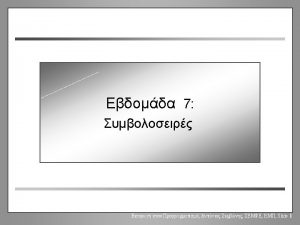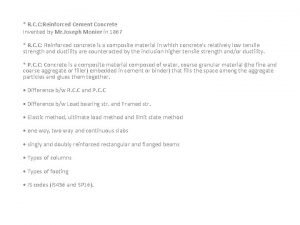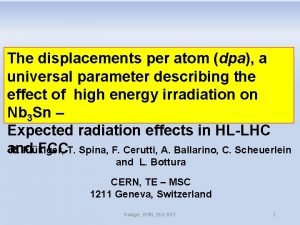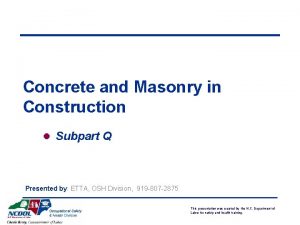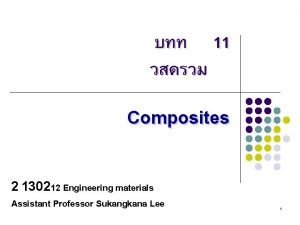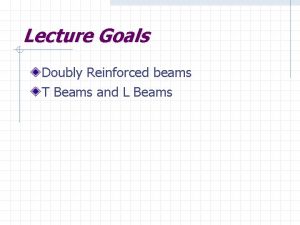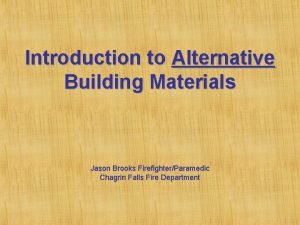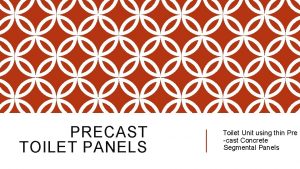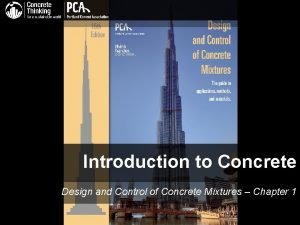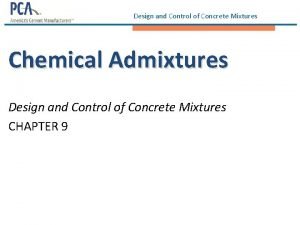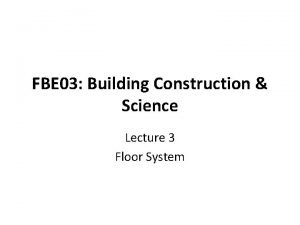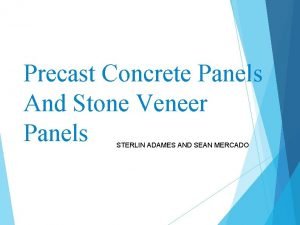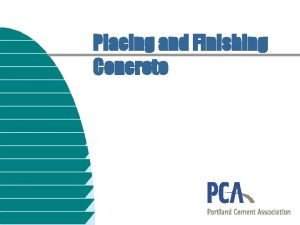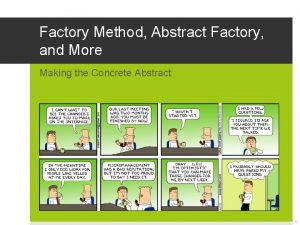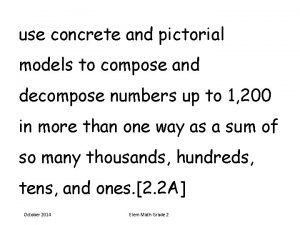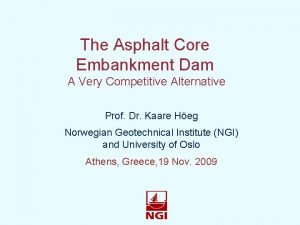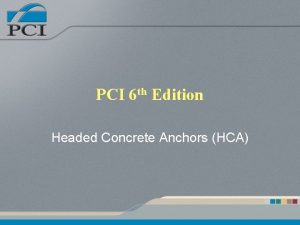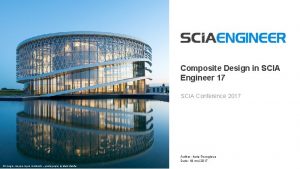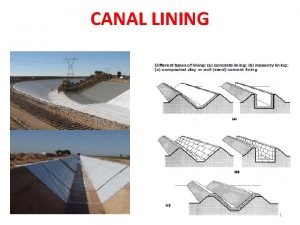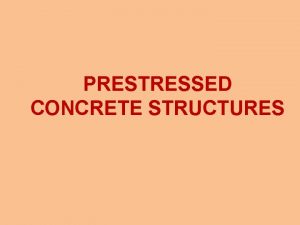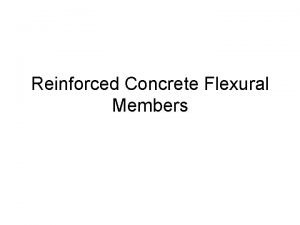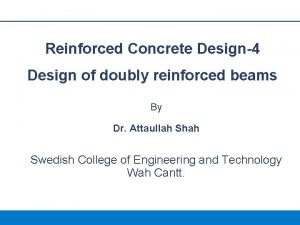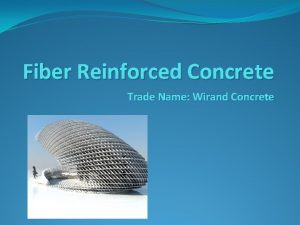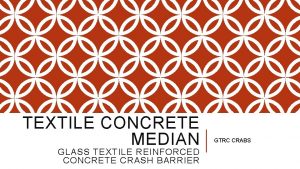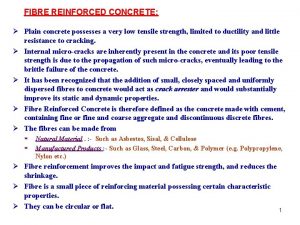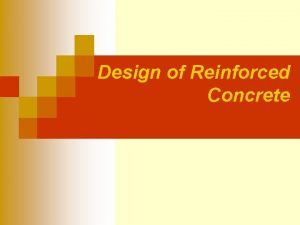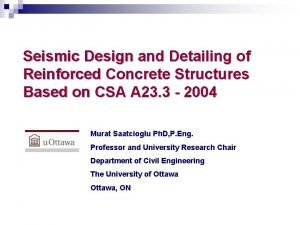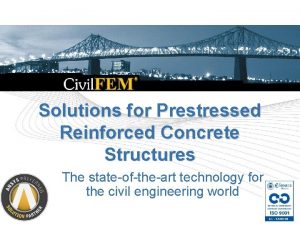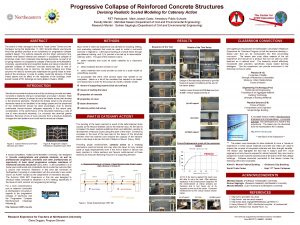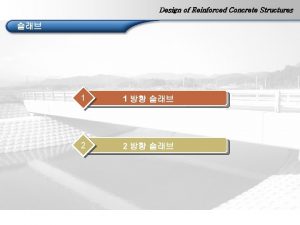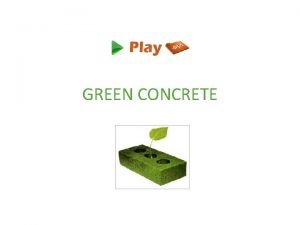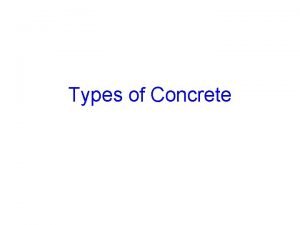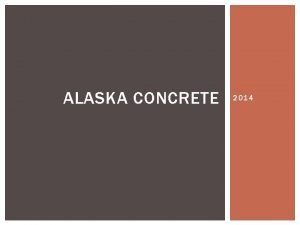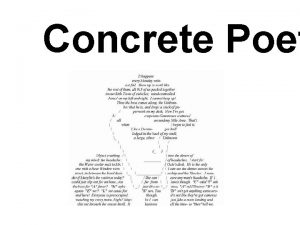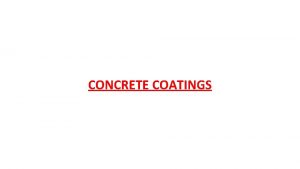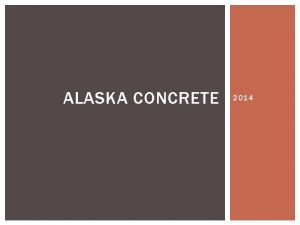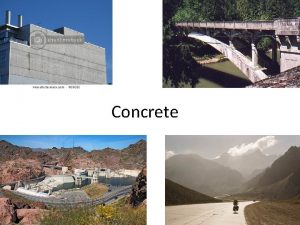DECivil Reinforced Concrete Structures Under Imposed Displacements Mrio























































- Slides: 55

DECivil Reinforced Concrete Structures Under Imposed Displacements Mário Lopes (mlopes@civil. ist. utl. pt) Departamento de Engenharia Civil, Arquitectura e Geo-Recursos do Instituto Superior Técnico, Lisboa Pavia, 7 March 2014

Part 1 DECivil Background and theoretical concepts Part 2 Practical applications

Part 1 Background and theoretical concepts DECivil BACKGROUND Recent earthquakes have shown that large underground structures may be vulnerable to earthquake actions.

DECivil DYNAMIC BEHAVIOUR Due to the large mass of soil, the dynamic behaviour of the soil+structure system is controlled by the soil stiffness and energy dissipation The structure follows the soil and has to withstand similar horizontal displacements along flexible alignments. The structure does not need to withstand horizontal inertia forces, which are directly transferred to the soil on the sides of the station

surface R F structure. R R Softs oil structure stiff soil DECivil PLAN R – rigid alignment VERTICAL CUT F – flexible alignment Collapse of tube stations during the Kobe earthquake was triggerred by the columns of flexible alignments, unable to withstand the horizontal displacements imposed on them by the surrounding soil

Other situations of structures/elements under imposed displacements - Columns supporting stairs at middle height DECivil

- Building columns connected only to flat slabs Secondary elements DECivil Designed to withstand vertical loads and displacements of the main structure - Piles of bridges and buildings in soft soils Kynematic component: imposed displacements - In general: flexible elements in paralell with much stiffer elements

F F FE DECivil FE/q Fperm load 0 0 E

F L DECivil Imposed displacements Imposed curvatures

Strength increase (at section level) Increase in deformation capacity at yield ? DECivil Strength increase does not increase yield deformation capacity

Strength increase (at section level) Increase in ultimate deformation capacity ? DECivil Strength increase, in general, decreases ultimate capacity

INADEQUACY OF CURRENT CODE PROCEDURES DECivil Under earthquake actions underground structures do not need to resist horizontal inertia forces, only horizontal imposed displacements. Within the usual code framework this would be equivalent to consider the behaviour factor infinite (q= ), which highlights the inadequacy of current code procedures, including the ones allowed by EC 8, for the seismic design of underground structures and other elements/structures under imposed displacements.

Current code procedures for seismic design based on elastic analysis and accounting for non linear behaviour by means of an DECivil overall coefficient (q – factor in EC 8), by assuming a constant proportion between forces and displacements (constant stiffness) induce the illusion that yielding and the ductility demand can be avoided or controlled by providing more strength to the structure. This is true under applied forces, it is false under applied displacements.

NEW DESIGN METHODOLOGY DECivil for structures under imposed displacements, aiming at providing deformation capacity: elastic flexibility + ductility

DESIGN Application of Capacity Design principles to maximize ductility 1 - Choose appropriate plastic mechanism considering potential DECivil soil displacement profiles imposed to the structure. 2 - Design plastic hinges zones (PHZ) with the flexural capacity necessary to resist to other actions but the seismic actions (the design moments due to the seismic action are zero in the PHZ´s). 3 - Provide zones chosen to remain elastic with excess flexural and shear capacity. Provide confinement reinforcement in the PHZ´s

CAPACITY DESIGN 1 F DECivil 2 3 F 4 F F Link 1 y u 1=20 y Direct Design u=4 y F y Links 2, 3, 4 Direct Design Capacity Design y Capacity Design u=3 y+ u 1=3 y+20 y=23 y

CONCEPTION DECivil Structural elements whose non linear behaviour is controlled by flexure, with as little influence of axial and shear forces as possible. 1 - Counterforts or other rigid elements, such as short beams, should be avoided. 2 - Concrete and steel of higher strength should be used. 3 - Large soil covers on top of the structures should be avoided (to reduce axial forces in the columns). 4 - Secondary structural elements (for instances stairs) and non structural elements (for instances masonry partition walls) should not restrict the deformation of the main structure.

ANALYSIS Evaluation of deformation capacity post yield range nonlinear DECivil monotonic analysis monotonic constitutive relationships for steel , confined and unconfined concrete previous knowledge of amounts and details of reinforcement Safety verification comparison of kynematic variables that define rupture check if the ultimate strain in concrete or steel is exceeded anywhere in the structure

It is necessary to account for variations of stiffness due to cracking and different amounts of reinforcement (flexural and confinement), that depend on the design for static loads and DECivil levels of imposed deformation. Current code procedures based on constant stiffness assume an average stiffness in service conditions (Econcrete is a secant value at = 0, 4 fc), which is an acceptable approximation at those situations. But it may be a gross aproximation if in many zones of a structure yield and post yield behaviour take place

Variations in stiffness Global structural analysis - account explicitly for stress-strain relationships for steel and concrete up to rupture at each stage of analysis, including effects of stain-hardening of steel and confinement of concrete. DECivil Safety verification Local level - comparison of strains Coeherence The stress strain relationships used to evaluate stiffness for global structural analysis are the same used to evaluate the local strain demand. Therefore it is not possible to consider average values for global analysis and characteristic values for safety verification.

Material properties Characteristic / average DECivil It is not clear which one leads to more conservative results, as weaker steel and concrete are more ductile than strong steel and concrete

Load Hystory Elements with little shear force (good conception) DECivil Most relevant parameters: axial force and level of confinement

2 nd order effects DECivil

DECivil Under imposed displacements 2 nd order effects are favourable

DESIGN PROCEDURE Current design practice DECivil (i) Conception of the structure (ii) Global structural analysis based on constant stiffness (iii) Safety verification at section or material level. In RC structures this is transformed in the evaluation of amounts of reinforcement. Proposed methodology The third phase is a real verification phase, as the reinforcement has to be defined before the analysis. (i) Design the structure for all other actions with current procedures (ii) Add reinforcement to increase ductility (second conception phase) (iii) Safety verification at material level If the result is not acceptable repeat (ii) and (iii) iterative procedure

Part 2 Practical applications DECivil Example structure

COMPARISON EC 8 (DCL) – PROPOSED METHODOLOGY DECivil Objective: to maximize the overall deformation capacity, measured by the average distortion 5 m 6 m Soft soil H 5 m 6. 5 m 9 m 9 m Stiff soil = /H

Evaluation of deformation capacity Steel – constitutive relationship and rupture criteria DECivil Pipa, 1993 It is assumed that appropriate detailing ensures the above constitutive relationships

Concrete – constitutive relationship and rupture criteria DECivil Mander et al, 1988 It is assumed that appropriate detailing ensures the above constitutive relationships

EC 8 -Part 1, Low Ductility Class, q=1. 5 – design (because it is the Class more different of the proposed methodology) Since the analysis is elastic, the deformation capacity is DECivil controlled by the flexural capacity of the structural elements. This is limited only by the maximum amounts of flexural reinforcement. EI=0, 5 x EIelastic, to account for the reduction of stiffness due to cracking

DECivil

Proposed methodology 1 – choice of appropriate plastic mechanism Plastic hinges at beam and column extremities are unavoidable 1 DECivil 2 3 Irregular displacement patterns (due to soil layers with different stiffness) plastic hinges in columns may be unavoidable (3) chose mechanism 2 No need to avoid the soft storey mechanism as in building structures

Proposed methodology Perimeter walls: no need to increase the flexural capacity (q= Msd=0). Provide confinement reinforcement DECivil Slabs: increase the flexural capacity near slab/wall joints to ensure slabs remain elastic (Msd slab = 0. MRd wall) Beams: 1 - extremities: provide confinement at the plastic hinge (q= Msd=0). 2 – near beam column joints: increase flexural capacity Columns: provide confinement near all joints (q= Msd=0).

DECivil Columns – a priori the column would only need minimum flexural reinforcement, as due to permanent loads MSd 0 Results – very low global deformation capacity high local ductility demand on the columns Ü beam column nodes rotate conterclockwise Ü lack of stiffness of the columns Solution – Increase column stiffness by increasing the flexural reinforcement

DECivil

RESULTS DECivil EC 8, linear analysis, q=1. 5 → max = 12, 4 x 10 -3 EC 8, nonlinear analysis → max = 6, 2 x 10 -3 Proposed methodology, nonlinear analysis → max = 16, 7 x 10 -3

CONCLUSIONS Application of EC 8 –Part 1 (Buildings) to underground structures may be unsafe as may lead to the overestimation of the structure deformation capacity. It is suggested that EC 8 covers DECivil underground structures explicitly to avoid extrapolations from other parts of EC 8 not dedicated to these type of structures. The reason is that increasing the flexural capacity of a RC section does not increase the deformation capacity, as assumed by applying current design methodologies. M 2 2’ EIsec 2 1 EIsec 1 cy c

CONCLUSIONS DECivil Current EC 8 procedure may mislead the designer if a low behaviour factor is used, as it would induce the illusion that the structure behaves almost in the elastic range. In reality there is a clear penetration in the post yield range, as the curvature diagram at rupture shows.

CONCLUSIONS 1 - The structure designed according to the new methodology allows a much better exploration of the ductility troughout the structure, as the comparison of the curvatures at rupture shows DECivil

CONCLUSIONS 2 – The available ductility at section level is much higher in the structure designed according to the new methodology DECivil 1 + 2 the structure designed according to the new methodology has a deformation capacity ( max = 16, 7 x 10 -3) 2, 7 times higher than the EC 8 designed structure ( max = 6, 2 x 10 -3) In real design the difference would tend to be much higher as due to the illusion that the structure would remain elastic the designer would not conceive design it for ductility it to be flexible and detail and

CONCEPTION DECivil

DECivil

Underground stations with different conceptions DECivil

DECivil Bad structural detailing Couplers that only transfer the yield force of the reinforcement bar Bad anchorage of stirrups Spalling of concrete Loss of confinement

Secondary elements restraining the deformation of the main structure Example DECivil

DECivil

Line 9 - good structural conception increases global ductility Line 6 - elastic flexibility (linear behaviour) increases capacity deformation DECivil Lines 4 and 5 - the comparison shows that the extrapolation of EC 8 (DCL) procedure for buildings, leads to unsafe results. This would be less likely if DCM or DCH classes had been considered Lines 5 and 9 - the comparison shows the proposed design methodology improves the deformation capacity by means of increasing the overall ductility, specially for well conceived structures. Lines 9 and 12 - the comparison shows the effect of bad structural detailing is very strong, and affects more well conceived structures

Lines 10 and 12 - the comparison shows that the interference of non structural elements with the deformation of the main structure also has a very negative effect on the deformation capacity of well conceived structures DECivil Lines 11 and 12 - the comparison shows that the simultaneous effect of non structural elements and bad detailing of the main structure is slightly stronger than the effect of each Lines 6 and 12 – the comparison shows that for the new methodology to be efficient it has to be accompanied by proper detailing because without it the performance is worse than design by extrapolating code methodologies applicable to buildings

Use of the complex analysis procedure of the alternative design methodology in absence of adequate detailing may induce an erroneous feeling of sophistication and accuracy, and it can even have negative effects. And properly designed reinforced concrete elements can be very ductile. DECivil Oliveira et al, 1995

Comparison of costs DECivil The design according to the proposed methodology yields a structure with similar costs or slightly cheaper than the structure designed according to EC 8.

Applications to other elements and structures DECivil Piles of buildings and bridges – for the kynematic component (displacements imposed by the deformation of the surrounding soil) add confinement reinforcement in potencial PHZ (plastic hinge zones), the extremities of zones of sudden change of stiffness of the surrounding soil, and apply CD (capacity design) for shear design. Columns supporting stairs at middle height – increase confinement reinforcement in the deformable part and apply CD for shear design Columns of buildings not connected to beams – provide confinement reinbforcement at the extremeties. Amount of flexural reinforcement is arbitrary but must consider the efficiency of confinement.

Seismic design of straight bridges in the longitudinal direction DECivil This is not a case of imposed displacements, as the columns have to transfer a inertia force to the foundation (except for the case of a fixed abutment). But as the displacement on top of the columns is equal, as long as the sum of the shear forces the columns can transfer is equal or more than the inertia force, the columns only need to be designed for ductility and energy dissipation. This means that the distribution of flexural capacity by the different columns is arbitrary, therefore it is possible to uniformize the design of the columns and the foundations.

Example DECivil Short column Longer columns 105 25 (2, 9%) 15 25 (0, 4%)

Problem to be solved: Design 1 reinforcement 2 – Find out the amount of reinforcement that leads to the same performance for the same seismic action DECivil 22 25 (0, 6%)

DECivil Thank you very much for your attention
 Jeffrey spinelli
Jeffrey spinelli Board game
Board game Plastic centroid
Plastic centroid M50 concrete mix ratio
M50 concrete mix ratio Rcc reinforced cement concrete
Rcc reinforced cement concrete Robert smithson
Robert smithson Displacements per atom
Displacements per atom Fines will be imposed to a motorist:
Fines will be imposed to a motorist: The mind is flighty and hard to grasp
The mind is flighty and hard to grasp Informal inventory
Informal inventory Concrete semi concrete abstract
Concrete semi concrete abstract Employers must not place construction loads
Employers must not place construction loads Examples of social learning theory
Examples of social learning theory Concrete buckets osha
Concrete buckets osha Scrim vci film
Scrim vci film Design of singly reinforced beam
Design of singly reinforced beam Reinforced composite
Reinforced composite Reinforced robot humor suppression pump
Reinforced robot humor suppression pump Doubly reinforced t beam
Doubly reinforced t beam Reinforced reaction injection molding
Reinforced reaction injection molding Ratatosk reinforced
Ratatosk reinforced Wallboard that has been reinforced with lexan®:
Wallboard that has been reinforced with lexan®: Precast concrete toilet structures
Precast concrete toilet structures Homologous structure
Homologous structure Steel bar for prestressed concrete
Steel bar for prestressed concrete Piaget concrete operational stage
Piaget concrete operational stage What are concrete nouns
What are concrete nouns Concrete operational
Concrete operational Basking shark annotated
Basking shark annotated Red panda acrostic poem
Red panda acrostic poem Introduction to concrete
Introduction to concrete Concrete detail definition
Concrete detail definition Inurl:/origami/ .php?year= site:com
Inurl:/origami/ .php?year= site:com Meaning of concrete details
Meaning of concrete details Design and control of concrete mixtures
Design and control of concrete mixtures Concrete class in uml
Concrete class in uml Concrete diction
Concrete diction Polyester concrete overlay
Polyester concrete overlay Carnalcalibration
Carnalcalibration Suspended floor construction
Suspended floor construction Jubilee church precast construction
Jubilee church precast construction Whats an abstract noun
Whats an abstract noun Compete concrete noun
Compete concrete noun Placing and finishing concrete
Placing and finishing concrete Concrete experience
Concrete experience Why was the berlin wall called a “canvas of concrete”?
Why was the berlin wall called a “canvas of concrete”? Abstract concrete class relationship
Abstract concrete class relationship Concrete pipe gaskets
Concrete pipe gaskets We wear the mask by paul laurence dunbar analysis
We wear the mask by paul laurence dunbar analysis Concrete and pictorial models
Concrete and pictorial models Roman concrete
Roman concrete Asphalt core dam
Asphalt core dam Middle ages description
Middle ages description Pci anchor
Pci anchor Scia engineer 18 crack
Scia engineer 18 crack Types of canal lining
Types of canal lining

